David Roberts ; A trip to Fort Montecchio, a fortress on the Italian Frontiera Nord at Colico, Lake Como
With about half a day free of my usual Saturday missions, I decided to had up to Colico at the northern end of Lake Como to investigate the fortifications Forte Montecchio Nord and Forte de Fuentes. Colico is easily reached from Milan Central Station with fast trains arriving in about one and a half hours; lookout for trains heading from Milano to Tirano via Monza and Lecco, the cost should be about 15 to 16 Euros return. With any luck you might get one of the modern trains that Trenord run on that line from time to time, with air conditioning, phone chargers and bathrooms. On the other hand, you might not. The train I picked up at Monza, was an old style train with that most typical of Italian train problems. Non- opening doors. At Monza the train arrived on time , but then there was a five minute wait while none of the doors opened, Frequently, Italian trains have problems with maybe one or two of the automatic doors not opening , all of them not opening is fairly unusual. Anyway, an air of general panic sets in. People wander up down the platform looking for a door that will open, while the passengers who want to get off at Monza wonder if they are going to the next stop at Lecco, forty minutes away. Finally, the door issue is resolved and we all get on. Before Lecco, a helpful train controller comes round and advises all passengers not to panic, the doors will open at all stops. It is just that there may be a five-minute delay, before they do. After Lecco, the train heads along the shore of Lake Como through a series of tunnels- depending on the weather and the cleanliness of the train windows you may or may not get a decent lake view.
On arriving at Colico, I exit the front of the station. There are no directions to Fort Montecchio, despite it being an obvious local tourist attraction. I stop for a coffee and ask for directions. So coming out of the front of the station, you turn right and walk a short way down the main street. You turn right again to head towards the lakeshore, an underpass takes you back under the railway tracks and through a small park to the lakeside from here you turn right again and passing by a boatyard and a lakeside motel you may in the end find the signpost to Forte Montecchio via the Sentiero Valtellina . There are other routes. Anyway, after a moderate uphill walk, I do reach the Fort. If you do not get lost, it is probably about a half hour walk from the station.
When I arrived at the Fort, I found they were having a historical re-enactment day, which was a pleasant surprise. I think they normally have guided tours, but because of the re-enactors they told me that the tour guides would be giving information at strategic places around the site instead. Ticket price is Euro 8, but if you pay Euro 10, you can get entrance to the nearby (well fairly) Fort Fuentes as well.
So a bit about the fort. It is located on a hill with views over the mouths of two valleys, which converge on Colico. Valchiavenna brings the River Mera down from Monte Spluga into Lake Como while the Valtellina brings the River Adda. The fort has a controlling view over both valleys. For the Italian High Command the nightmare was that the Swiss (or rather than the Germans or Austrians transiting through Switzerland) would invade through the Valchiavenna, at which point nothing much would stop them get through onto the Lombard plain. The Valtellina provided an even better highway for the Austrians, since at the time the Austrian frontier with Italy was a the top end of the valley and not at the Brenner. Fort Montecchio forms a key pat of the Frontiera Nord or the Cadorna Line, a defensive line running along the Italian frontier with Switzerland. Although in planning for many years, the Italian finally got round to building this highly strategic fort in 1911.
As you enter the Fort,, the first buildings you visit are the barracks .The first building you actually see as you go in latrines , of which there appear to be only two for a garrison of 30 or 40 men. I suppose most of the time the barrack rooms are empty but today they are livened up by the presence of some rather jolly Italian military re-enactors who have bought a fair quantity of original and reproduction military relics to display, which they are cheerfully explaining to the visitors. One room is displaying weaponry and antique communications equipment, another is equipped as a sickbay. They have obviously spent a lot of time on their hobby in assembling the stuff.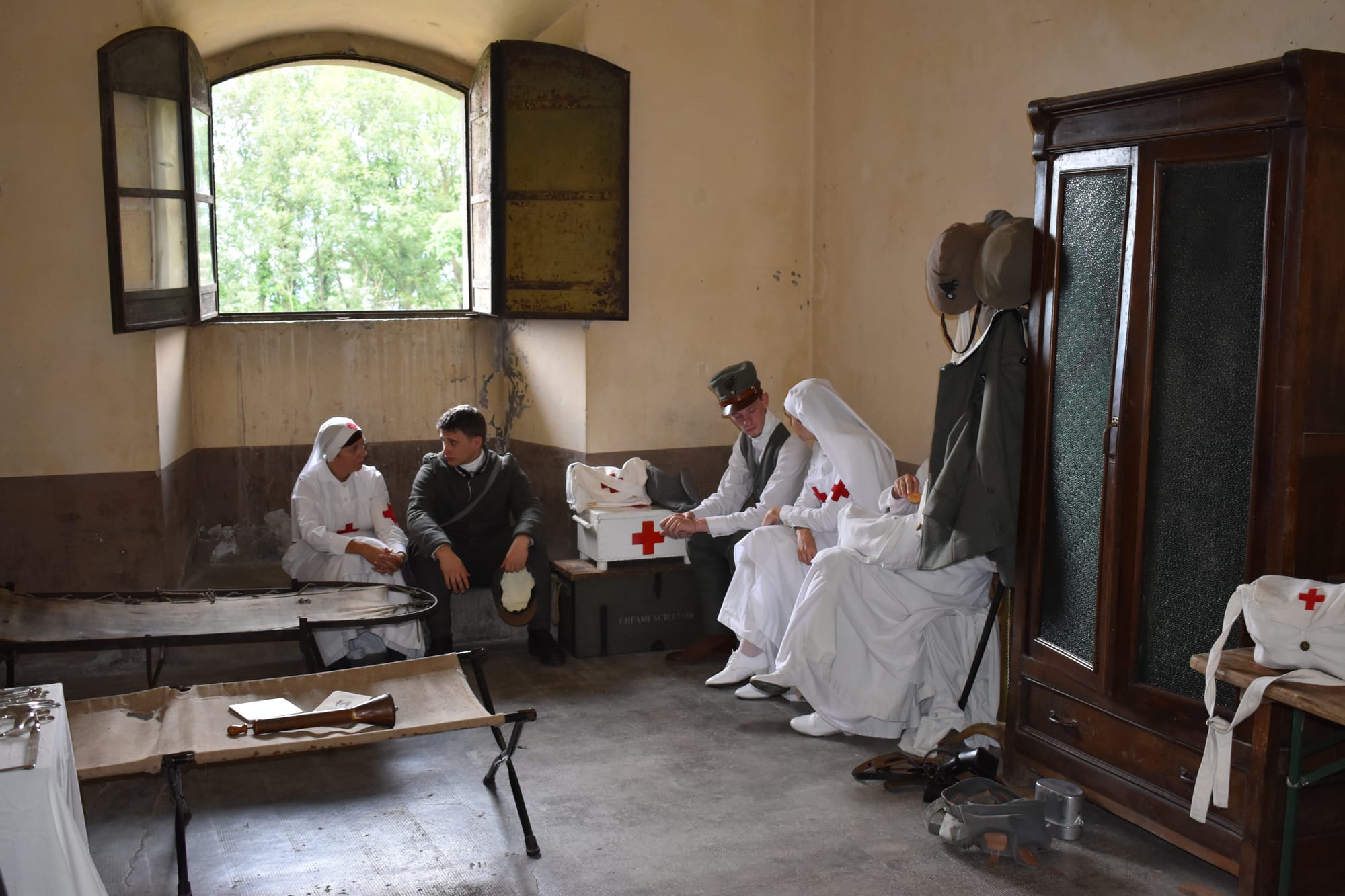
Passing through the living quarters, I get to the 140-metre tunnel, which takes you up to the gun emplacement. Along one side of the corridor which is about 2,5 metres wide and 3 metres high are a series of gun loops which would have enabled the garrison to defend against anybody who got into the complex. On the other side of the corridor, there is another tunnel cut into the solid rock, which leads to the Powder magazine. A guide gives a helpful explanation. Obviously the Powder Magazine is separated as far as possible from the rest of the complex to stop any explosion there starting a chain reaction. The concrete floor was specially treated to reduce the risk of sparks, and the lighting is controlled from outside the room for the same purpose. Clearly it was a no smoking area!. There also special measures to reduce the humidity and to allow condensation to flow away down two channels in the concrete floor. All this to provide a dry and stable environment for the powder, so that it actually worked if they needed to fire.
At the end of the corridor, you reach some rudimentary washing facilities and some living quarters; some genial Italian men dressed as the Durham Light Infantry occupy these. “Why the Durham light Infantry “, I ask. Apparently, the 12th Durham Light infantry formed part of the British French Expeditionary Force sent to support the Italians after their disastrous collapse at Caporetto in 1917. They were never present at Fort Montecchio, but they held the line of trenches in the British Sector of the Asiago plateau much further to the East. There an interesting display on British nurses who served with; Queen Alexandra’s Royal Nursing Corps, the Red Cross and Voluntary Aid Detachments in Northern Italy during the First World War.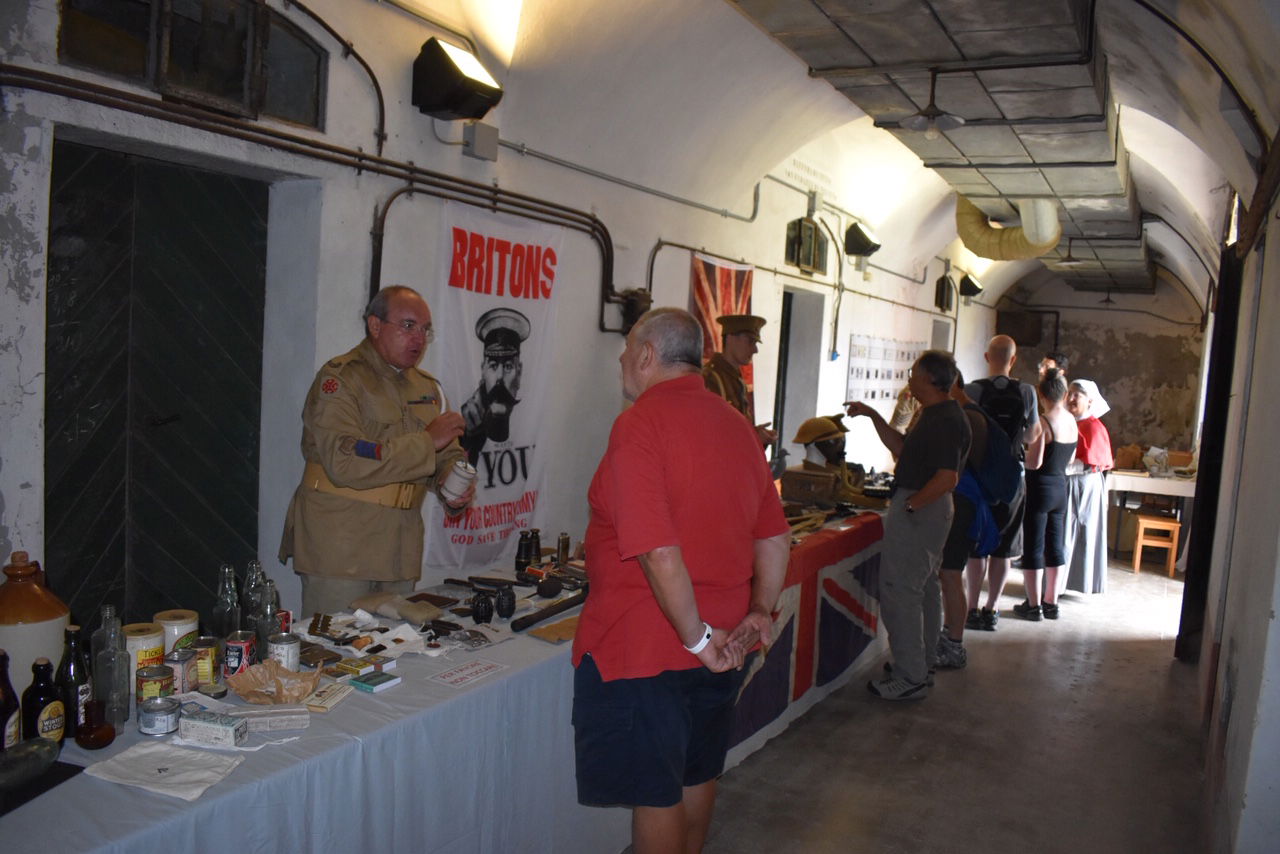
Going upstairs, I reached the Command Centre for the guns. First thing to note, it is entirely enclosed and therefore reliant on information telegraphed from outside. A guide told me, that there would be spotters positioned outside and in the valleys who would telegraph target information to the commend centre. In the centre of the room there used to be hugely accurate map of both valleys where the officers would plot the target information and using the internal communications (a series of copper tubes going to each gun turret), they would communicate the target information to individual gun turrets. The guide told me that they had tested the sound quality from the command centre to the gun turrets and it was good. The one snag was that neither the gunners nor the command centre could tell whether the target had been hit or not, this explained the ladder in the corner of the room which an officer had to climb and look out of a small cupola for signals from artillery spotters ranged along the mountain ridges.
Outside the command room, the guide explained the equipment in the corridor below the gun turrets. A series of small lifts were used to bring the artillery shells from the magazines below, the 50 Kg shells then had to be carried and put on conveyor belts to go up to the guns. –he also showed me the pumps and ventilation systems designed to let the gun smoke out of the area and keep the air breathable.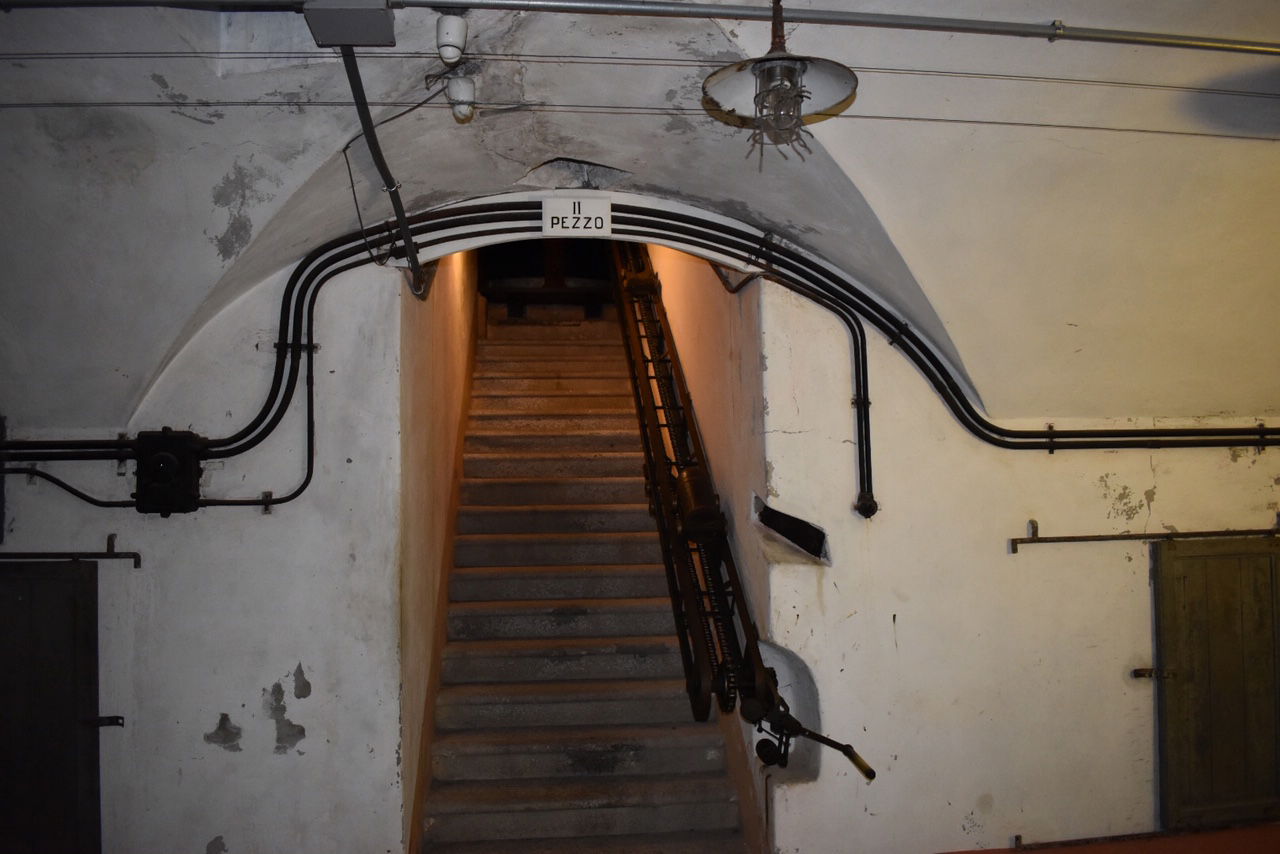
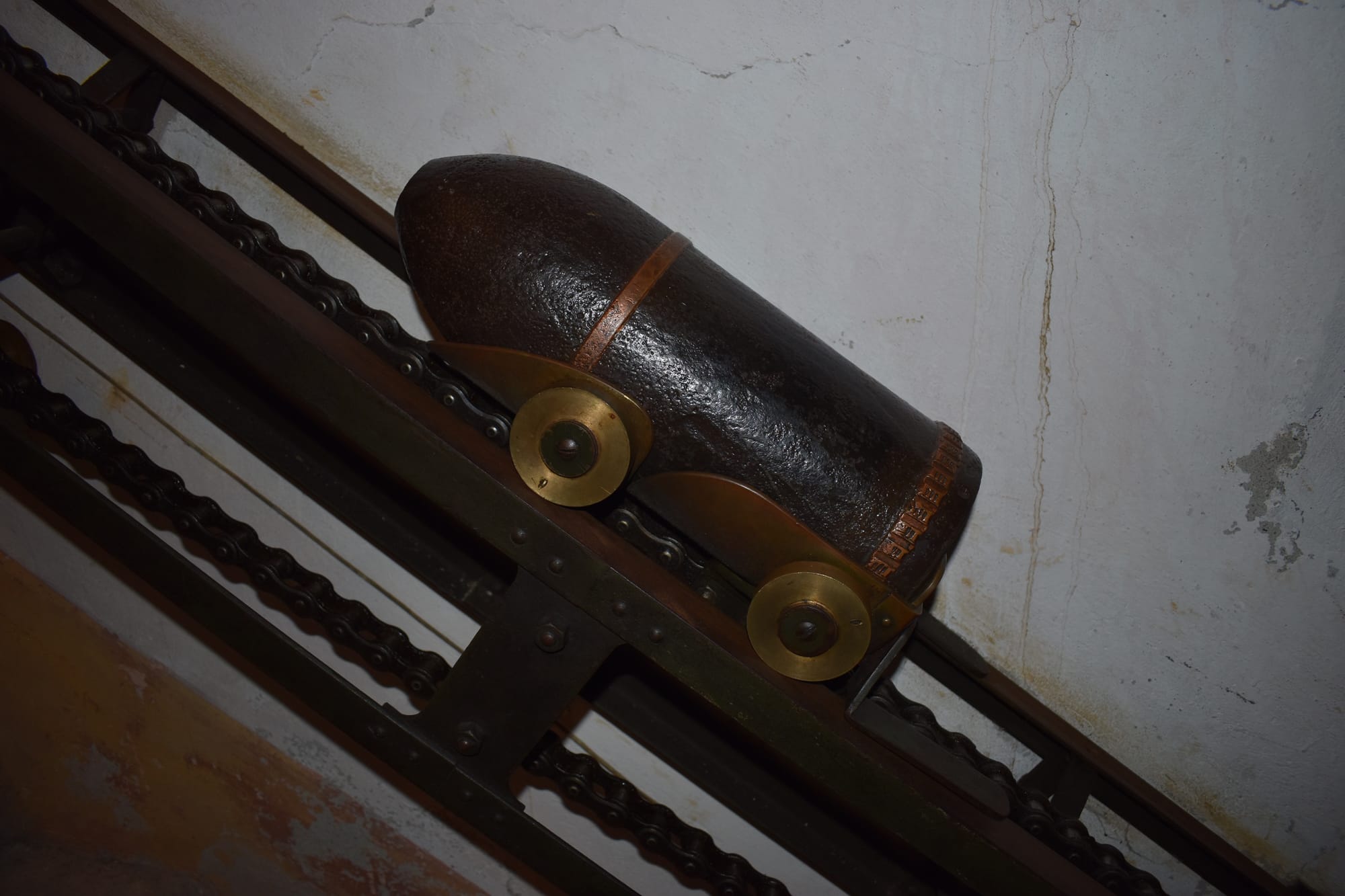
After a short wait, I was allowed up to one of the gun turrets, number 2. They are quite confined spaces, so you have to wait your turn. A charming young lady gave me a very detailed explanation about the guns. These were 149 mm Naval Guns, capable of firing a 50kg shell up to 14km (which is quite a way up the Valchiavenna). Of the four guns, two were French built Schneider guns from Le Creusot, while the other two were Italian models built under licence by the great Italian Industrial concern of Ansaldo. The gun in turret number 2 is one of the Schneider models. The guns is still in an impressively good condition and still capable of being fired. The turrets are also still able to rotate round 360 degrees, but apparently, they do not do that for fear of damaging the mechanism. The other striking thing was how hot it was going to get in the turret, today it was quite overcast –but on a hot summer day the temperature could exceed 50 degrees centigrade. The young lady guide was well practiced at opening the gun barrel and described the whole procedure, The 50 kg shells came up the conveyor, were loaded into the barrel with the powder, firing instructions were received and then they fired, there was an apparatus to disperse the gun smoke and operation finished. She kindly took a photograph down the gun barrel for me. I should mention at this point that the guns were designed to hit fixed targets; bridges, roads etc. to impede an enemy advance rather than to hit formations of enemy troops, they were not really designed for rapid firing.
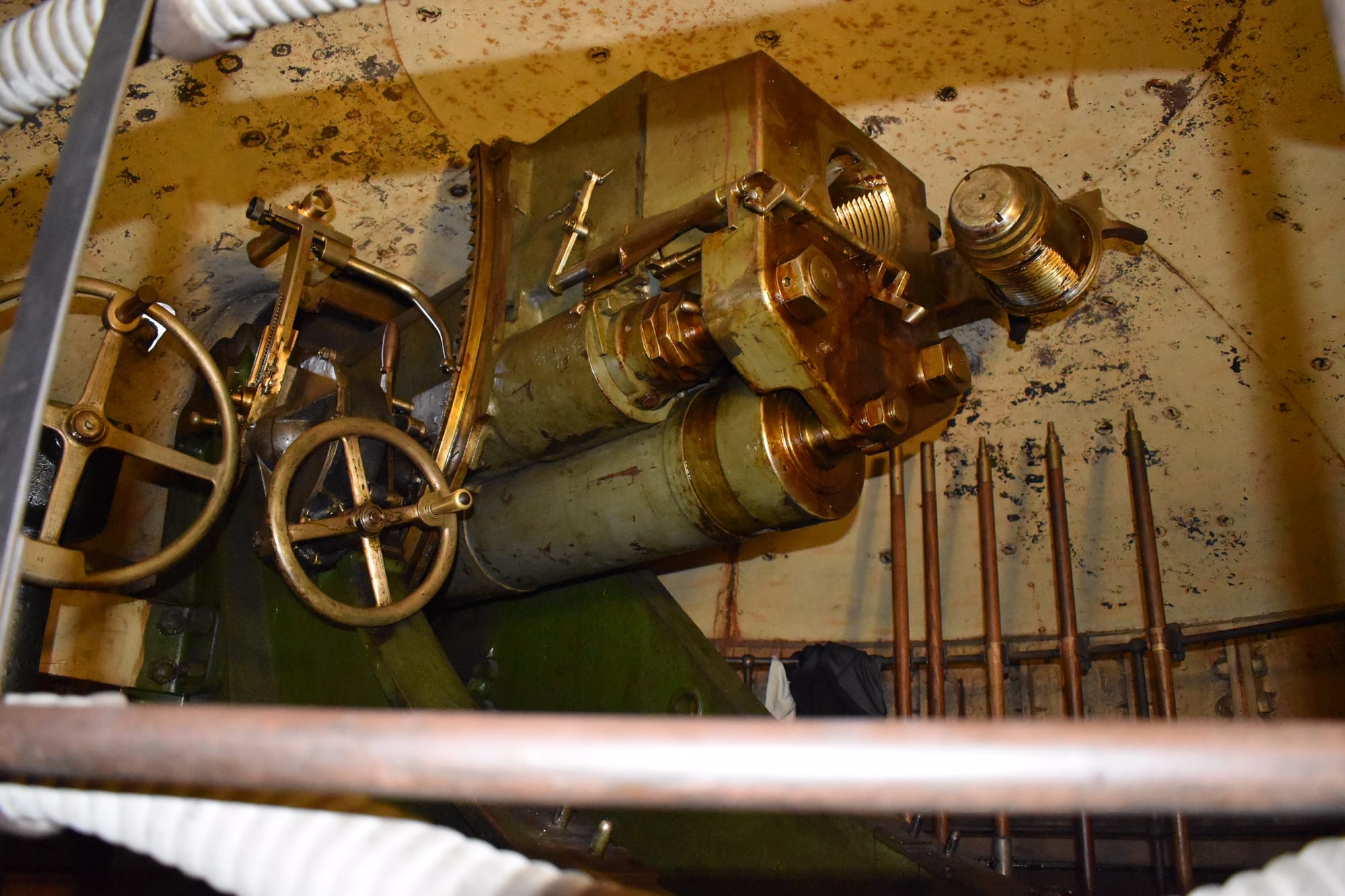
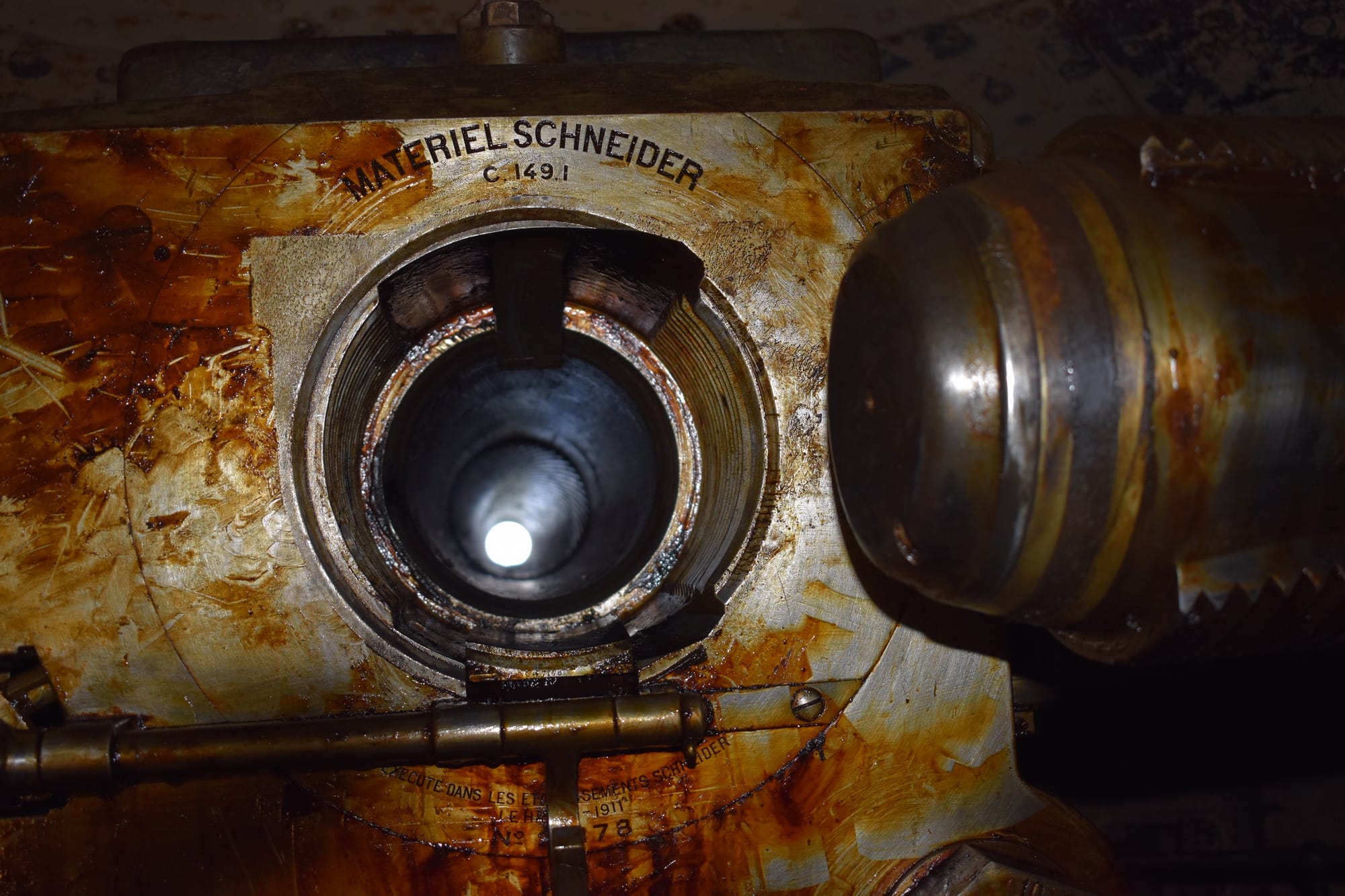
Done with the gun turret, I went out on to the roof of the gun emplacement. Here you can get a full view of the four guns and realise just how well sited they are to rotate and fire either up the Valchiavenna or the Valtellina. There are also some fabulous views over Lake Como and the surrounding mountains. Since today was a bit hazy, it’s probably worth another visit on a clear winter’s day when the Mountains have snow on them. Since it is re-enactment day, among the tourists on the emplacement we have a number of Italian dressed as officers and indeed nurses, not to mention a Scottish soldier it all adds to a rather charming effect.
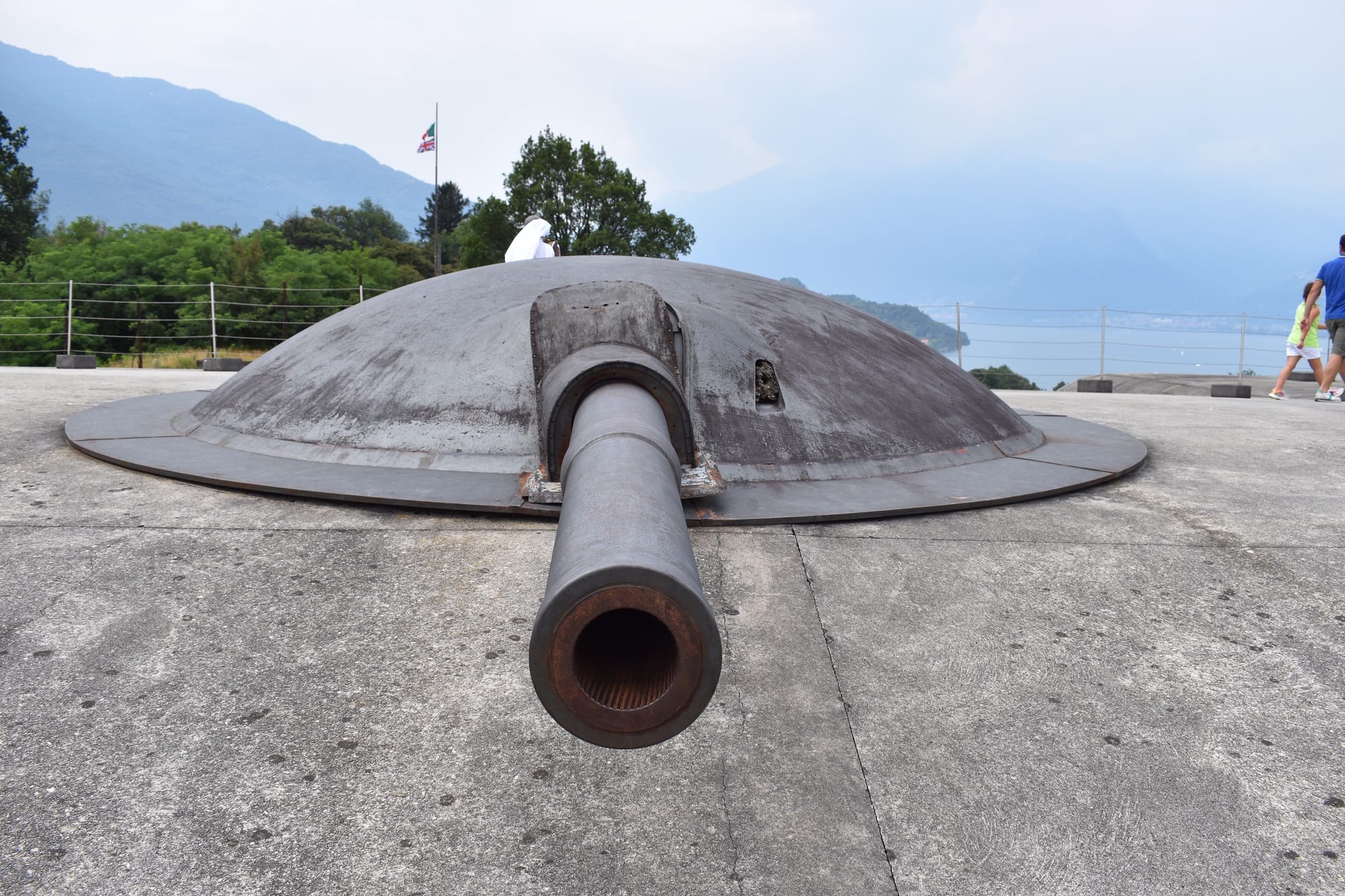
Back down from the emplacement it is worth checking out the generator room for some rather impressive control switch panels manufactured by Ercole Marelli & Co of Sesto San Giovanni, near Milan , before taking another stroll plump the outside of the fortress.
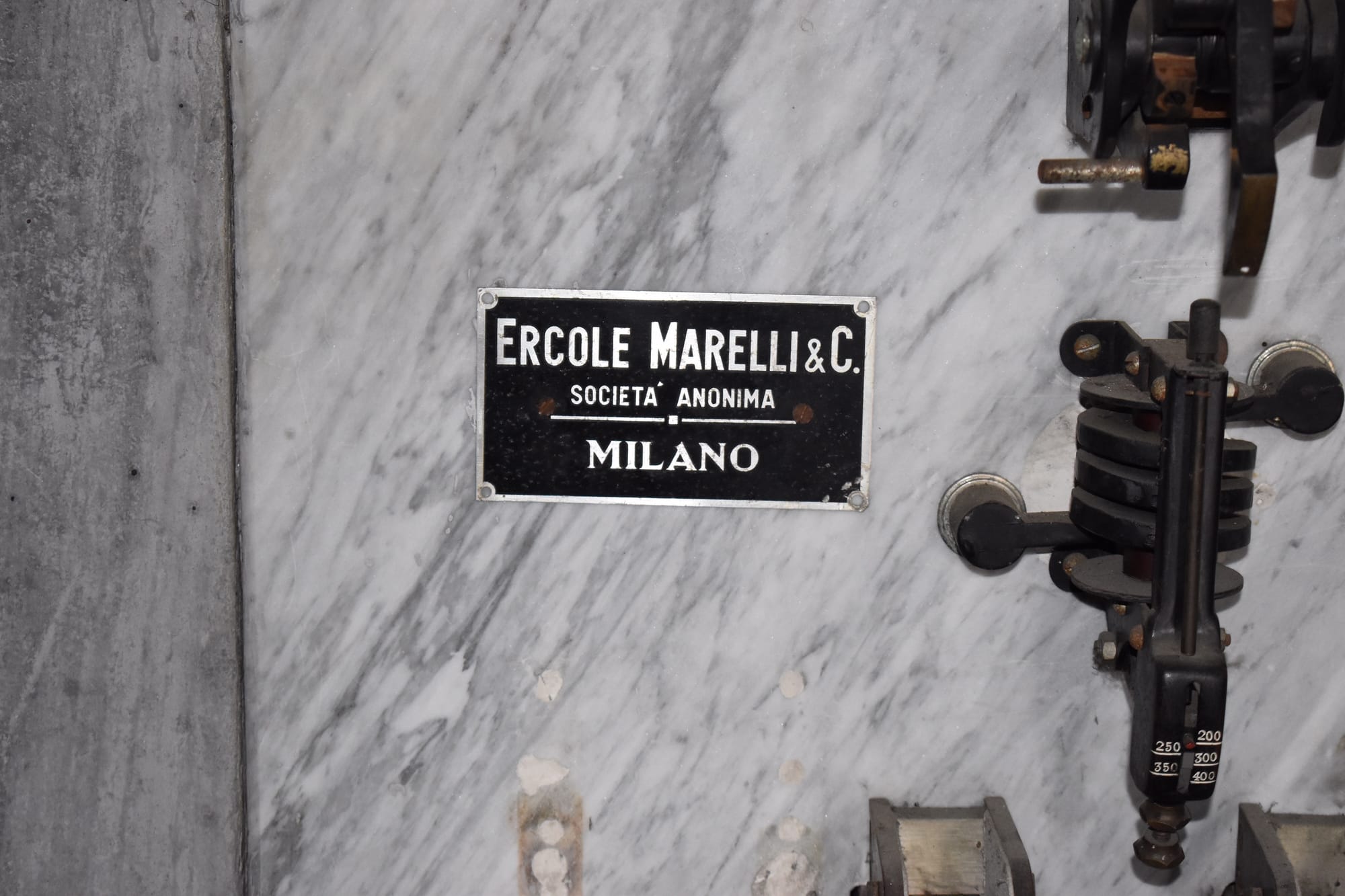
All in all , a very rewarding and interesting morning, enhanced by the very informative guides and the extra contribution from the re-enactors in bringing the place alive. Well worth a visit if you happen to be in that area. From Milan, it is easy day out if you get an early train. If you are in Como, the trip up the Lake takes about 3 and half hours, but the first boat should get you to Colico in tine to spend at least half a day there , being careful not to miss the last boat back again.